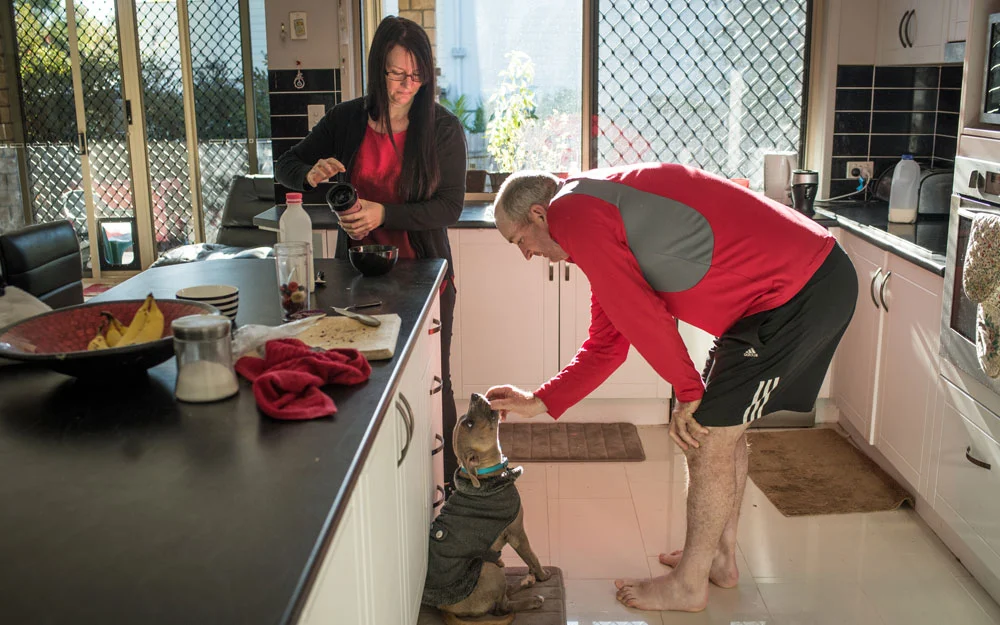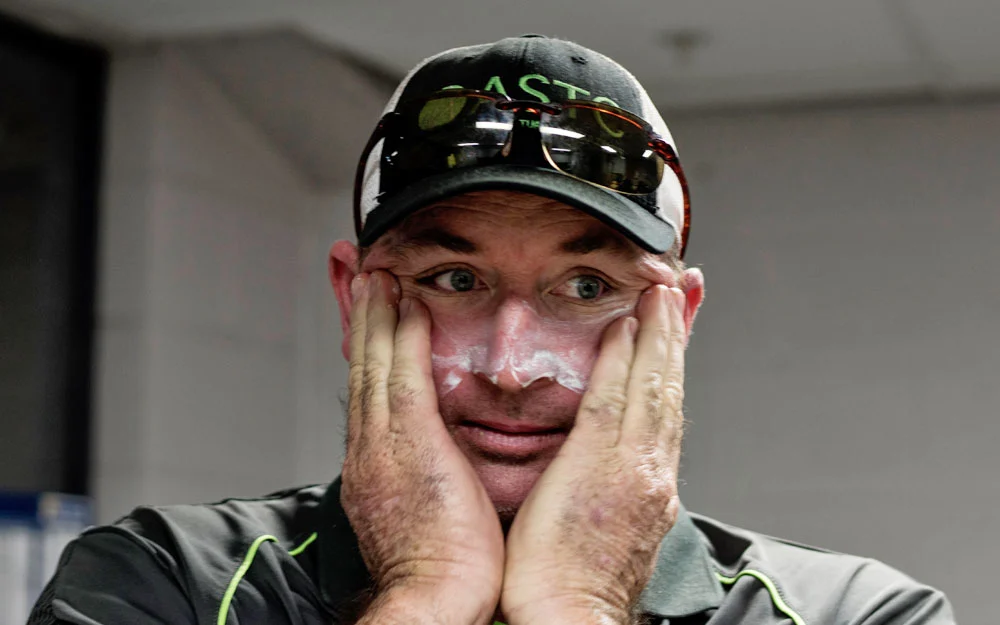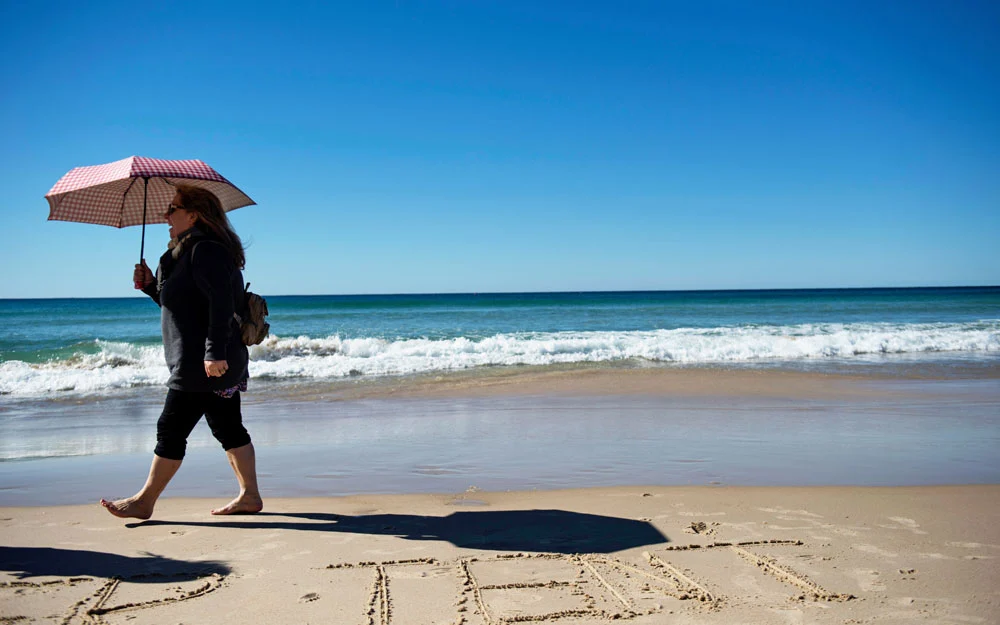Malcolm Caddies’ medical odyssey began like so many others’ around the world: with the discovery of a lump. It was under his left arm, and it was sizeable – about three centimeters. He hurried to the doctor in his hometown of Brisbane, Australia. She did some tests and came back with grim news. He had melanoma, a cancer of skin pigment. “She told me to get my affairs in order,” Mr. Caddies recalls, “that I was probably going to die.”
Australia and New Zealand have the highest rates of skin cancer in the world. And for 47-year-old Mr. Caddies, the head groundskeeper at Brisbane’s SunCorp Stadium, it has always been an occupational hazard. He works in Brisbane’s abundant sunshine, with its exceptionally high rates of ultraviolet (UV) light, and has long understood the risks, wearing sunscreen and a hat, avoiding the midday sun, and routinely going to doctors for skin checks. “You’re always having things cut out,” he says.
But his big malignant tumor signaled something much more dire. Mr. Caddies’ oldest son, then 17, searched “metastatic melanoma” on Google, and came away shaken. Meanwhile, Mr. Caddies and his wife shielded their two younger boys from the news.

Doctors removed the tumor and two lymph nodes
Yet when Mr. Caddies went to the Melanoma Center in Brisbane, the first thing the doctor told him was to “forget everything” he’d been told about the disease. While the tumor was large, it was not a death sentence. Indeed, tests showed that the cancer had not spread far. Doctors removed the tumor and two lymph nodes, and found that only one of them was affected. That was a promising sign.
When doctors later inspected Mr. Caddies’ history, they found another report of melanoma six years earlier. The fact that Mr. Caddies’ case was a recurrence qualified him to participate in a clinical trial. Since completing the treatment, he has had hospital checks every month as well as CT scans every three months. So far, he has no further symptoms. He says he now monitors the UV index as he tries to avoid unnecessary exposure. When he does venture out into the sun, he wears a wide-brim hat and the strongest sunscreen.

“No hat, no play” philosophy
His mission now is to spread the word about melanoma and to encourage fellow citizens, colleagues, and especially his children to lower their risk. The goal, part of a national drive in Australia, is to be “sunsmart.” That means adopting a “no hat, no play” philosophy, applying plenty of sunscreen, and staying inside or in the shade, when possible, during the high-UV hours around noon.
While melanoma rates in Australia remain stubbornly high with 13 300 new cases diagnosed every year, there’s a ray of good news: Rates for Australians under 40 appear to be dropping. That indicates that sunsmart lessons from Mr. Caddies and thousands of other survivors may be sinking in.

Learn how skin cancer survivor Malcom Caddies aims at being #sunsmart



